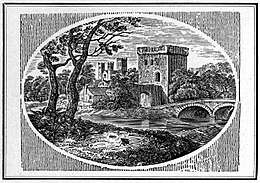The Fly and the Ant

The Fly and the Ant is one of Aesop’s Fables that appears in the form of a debate between the two insects. It is numbered 521 in the Perry Index.[1]
A question of precedence
In the fable as recounted by Phaedrus, the fly claims precedence since it tastes sacrifices even before the gods, and in the human sphere perches on crowned heads and makes free with any woman. The ant argues that taking liberties without a prior invitation proves nothing. Working for the common good is the true measure of worth, not vainglory, and winter will be the final arbiter.[2] On account of the ant’s boast of its industry and anticipation of winter, it has been argued that their debate is a derivative of the fable of the ant and the grasshopper.[3]
In some retellings, it is the ant’s reply that the fly perches on dung equally with places of prominence that is stressed. This is so in Odo of Cheriton’s ecclesiastical interpretation,[4] in Roger L'Estrange’s racy version[5] and William Somervile’s clash between a courtier and his country cousin.[6] William Caxton used the story to censure those who praise themselves,[7] while pride is the target of the neo-Latin poem based on the fable by Hieronymus Osius.[8] In La Fontaine's Fables the ant’s provident industry is highlighted,[9] as it is in the contemporary collection illustrated by Francis Barlow[10] as well as in the prose reflections of Samuel Croxall[11] and Thomas Bewick.[12]
References
- ↑ Aesopica
- ↑ Book IV, fable 25
- ↑ Francisco Rodríguez Adrados, History of the Graeco-latin Fable, Brill 2004, vol.3, p.449
- ↑ The Fables of Odo of Cheriton, Syracuse University 1985, pp.155-7
- ↑ Fable 34
- ↑ Occasional Poems, London 1727, Fable 3
- ↑ II.17
- ↑ Phryx Aesopus (1564) Fable 30
- ↑ IV.3
- ↑ Fable 48
- ↑ Fable 48
- ↑ The Fables of Aesop and Others, Newcastle 1818, p.270
External links
- Illustrations in books from the 15th – 19th centuries